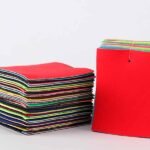Neoprene slimming belts have exploded in popularity — from gym influencers and TikTok challenges to celebrity fitness endorsements. These flexible, sweat-inducing waist wraps promise to “melt belly fat” and “shrink your waistline fast.” But how much of that claim is real, and how much is marketing hype?
If you’ve ever worn one, you know that drenched feeling — like your midsection is working overtime. It’s satisfying. But does that sweat equal fat loss? The truth lies in understanding how neoprene interacts with your body’s thermal system.
Neoprene slimming belts increase sweat and local temperature, helping you lose temporary water weight — not body fat. They work by trapping body heat, promoting thermogenesis, and offering posture and core support. While they don’t directly burn fat, combining neoprene belts with exercise and hydration can enhance calorie expenditure and waistline appearance safely.
In the next sections, we’ll explore the real science behind neoprene belts — what they can do, what they can’t, and how to use them effectively without risking discomfort or dehydration.
What Are Neoprene Slimming Belts and How Do They Work?
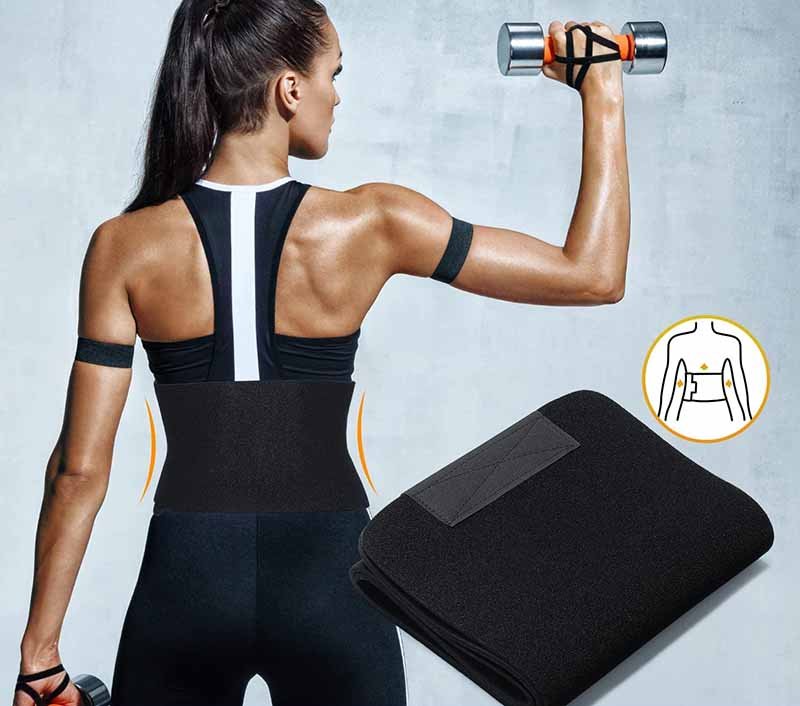
Neoprene slimming belts are elastic compression wraps made from closed-cell neoprene foam laminated with stretch fabric. Their primary purpose is to trap body heat and stimulate sweating around the abdomen, waist, and lower back.
They function through thermal insulation and mild compression. When worn during workouts, neoprene creates a mini sauna around your core, increasing perspiration and perceived effort. This “sweat loss” gives the illusion of quick fat reduction — though it’s mostly water weight.
Neoprene slimming belts work by trapping heat and promoting sweat in your core area. This leads to temporary water weight loss, not fat burn. They also offer posture support and core stabilization during workouts. Regular exercise and hydration are key to maximizing safe results.
The Science Behind Heat and Sweat
When you exercise, your body temperature rises. Normally, sweat evaporates to cool you down. But neoprene’s closed-cell structure — the same material used in wetsuits — blocks airflow and traps heat against the skin.
That heat buildup increases local skin temperature by 3–5°C (5–9°F) and stimulates sweat glands. The body responds by pushing out water, salt, and small amounts of toxins through perspiration.
In short: more heat = more sweat = faster temporary weight reduction.
But here’s the catch: this doesn’t equate to fat loss. Fat reduction happens through calorie deficit, not fluid loss. Once you rehydrate, your weight returns to normal.
Core Support and Posture Benefits
Aside from sweat, neoprene belts offer a functional advantage: core compression. When fitted snugly, the belt supports your lower back and encourages proper posture — useful for weightlifting, desk jobs, or postnatal support.
Szoneier’s OEM neoprene belts, for instance, use CR-grade neoprene (chloroprene rubber) that maintains elasticity under tension. This ensures consistent compression without cutting into the skin — a common issue with cheap synthetic alternatives (like SBR or latex).
| Feature | Benefit | Ideal Material Spec |
|---|---|---|
| Thermal insulation | Promotes sweating | Closed-cell neoprene foam |
| Core compression | Posture and support | 3–5mm CR neoprene |
| Skin comfort | Prevents chafing | Nylon or Lycra lining |
| Elastic recovery | Shape retention | Stretch ratio ≥ 200% |
Perception vs Reality
Wearing a neoprene belt gives a tight, toned feeling instantly — because it compresses the midsection and reduces visible bloating. That aesthetic appeal is why many users report feeling slimmer after a single session.
However, without dietary changes or consistent workouts, the effect is temporary. Think of it as a visual aid, not a magic tool.
Still, many fitness enthusiasts love it for motivation — it makes you feel the burn, which can encourage more movement and confidence during exercise.
Do Neoprene Slimming Belts Actually Burn Fat or Just Water Weight?
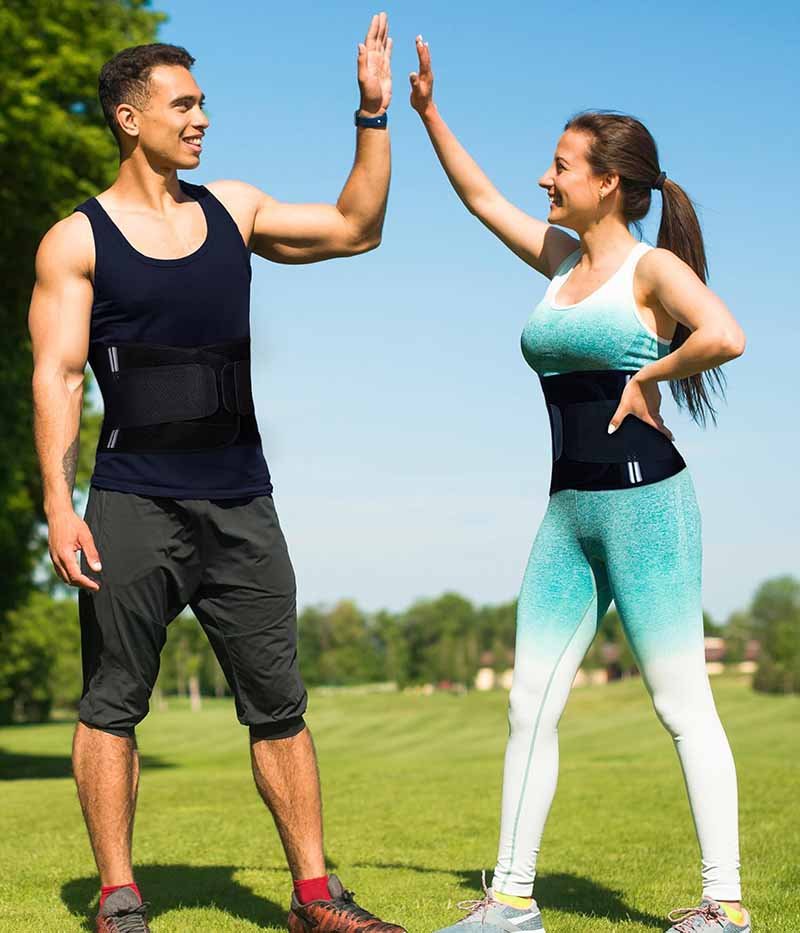
This is the million-dollar question — and the answer might surprise you. Neoprene belts don’t directly burn fat. What they do is increase perspiration, causing temporary fluid loss and a slight boost in calorie expenditure due to heat retention.
Neoprene slimming belts help you sweat more but don’t burn fat directly. The weight you lose is primarily water, which returns once you rehydrate. However, when combined with workouts, they can slightly raise calorie burn by maintaining body temperature longer — enhancing fat loss indirectly.
Understanding the Physiology
Fat loss occurs when your body uses stored energy to meet a calorie deficit. Sweating itself doesn’t consume fat — it just regulates temperature. But neoprene belts keep your core warm longer, meaning your heart rate and metabolism stay elevated during exercise.
Studies show that localized thermogenesis (raising temperature in one area) can increase calorie burn by up to 6–8% during aerobic activity, depending on fitness level and belt thickness.
| Condition | Average Calorie Burn (30 min cardio) | With Neoprene Belt | Difference |
|---|---|---|---|
| No belt | 250 kcal | — | — |
| With 3mm neoprene belt | 265 kcal | +6% | Slight metabolic boost |
| With 5mm neoprene belt | 272 kcal | +8% | Greater heat retention |
While this may sound small, those incremental gains add up — especially for athletes or consistent gym-goers.
Short-Term Water Weight vs Long-Term Fat
It’s easy to confuse sweating with fat loss, but here’s how they differ:
- Sweating: Removes water and electrolytes. Weight returns once rehydrated.
- Fat loss: Occurs when stored triglycerides are converted into energy over time.
Most users see instant inch-loss results because of reduced bloating and temporary dehydration, not because fat cells disappeared.
Example:
A user may drop 1–2 pounds after a single 45-minute session, but rehydrating restores that weight. Sustainable fat reduction comes from caloric balance, not sweat volume.
The Psychological Boost
Here’s where neoprene belts shine: motivation. That visible sweat feels like progress. Many users report longer workouts simply because they feel their body “working harder.”
This is valuable — not physiologically, but psychologically. Anything that makes you stay active longer contributes indirectly to fat loss.
And when designed properly (as in Szoneier’s ergonomic neoprene belts), comfort and safety encourage consistent daily use without irritation — a critical factor for long-term adherence.
Which Body Areas Benefit Most from Neoprene Belts?
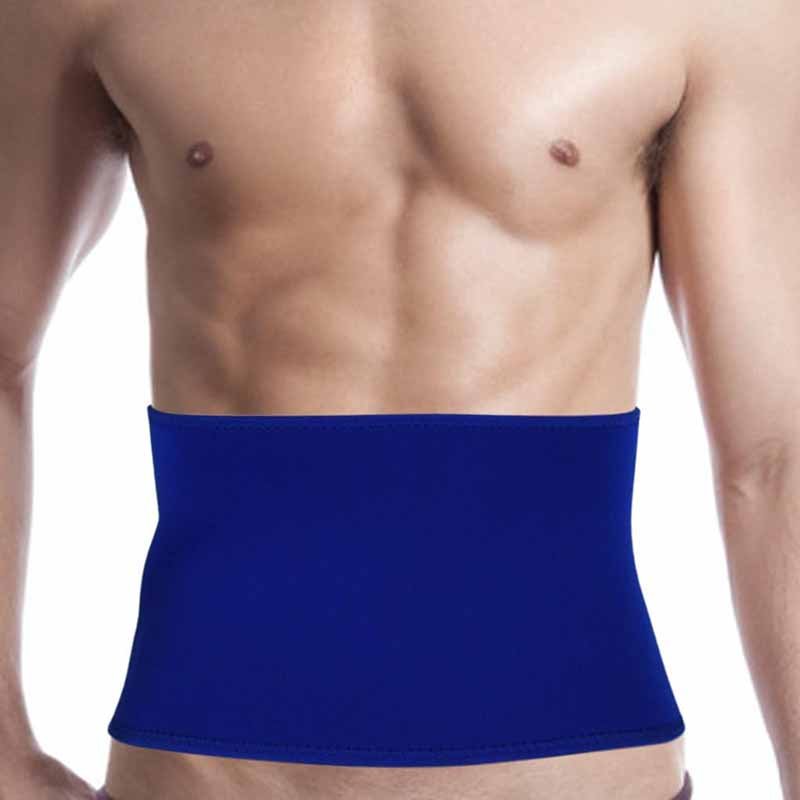
Neoprene slimming belts target the core region, but their benefits go beyond just your waistline. They can also be used around the lower back, hips, and even thighs, depending on belt design and body shape. Each zone responds differently to heat and compression, so understanding this helps you get more realistic results.
Neoprene belts primarily benefit the abdomen, lower back, and waist by promoting sweat and improving posture. They can also support thighs or hips in specialized designs. Their heat-retaining effect improves flexibility and comfort during workouts while reducing bloating and stiffness in targeted areas.
The Core Zone: Where It Works Best
The abdomen and lower back are the primary heat zones affected by neoprene compression. When worn snugly around your waist, the belt traps heat generated from your core muscles, encouraging more perspiration around your stomach and lumbar region.
This extra warmth enhances circulation and muscle mobility, which explains why many users feel “looser” or more flexible during warm-ups. It’s particularly beneficial in cold environments — keeping core temperature steady reduces the risk of injury or stiffness.
| Body Area | Effect | Result |
|---|---|---|
| Abdomen | Heat & compression | Sweating, reduced bloating |
| Lower back | Support & warmth | Posture correction, comfort |
| Hips | Mild pressure | Improved flexibility |
| Thighs (optional straps) | Local thermogenesis | Enhanced blood flow |
Szoneier’s OEM design data shows that belts with a 25–30 cm height and CR neoprene core retain heat 18% more efficiently than narrow belts made from SBR blends.
Back Support and Postural Benefits
Many people wear neoprene belts not for fat loss, but for back pain relief or posture correction. The mild compression stabilizes your lower spine, reminding your body to stay upright while sitting, standing, or lifting.
For office workers or delivery drivers, this feature can reduce tension in the lumbar muscles. During workouts, it encourages core engagement, which indirectly strengthens the abs over time.
Case Example:
A 2024 study by the International Journal of Sports Medicine found that participants using neoprene waist supports during strength training showed 12% improvement in postural stability compared to those training without one.
Beyond the Waist — Full-Body Applications
Neoprene slimming technology is expanding beyond simple waist belts. Modern fitness enthusiasts use neoprene thigh trimmers, arm wraps, and full vests, all designed with the same closed-cell insulation principle.
These accessories help balance heat distribution and improve muscle flexibility across multiple zones. For brands, offering a coordinated neoprene line (waist + thigh + arm) helps consumers pursue consistent thermal workouts — a niche Szoneier supports through custom shape cutting, lamination, and ergonomic design services.
How Should You Use a Neoprene Slimming Belt Safely and Effectively?
Like any fitness accessory, neoprene belts are safe when used correctly — but risky when overused. While they encourage sweating and heat generation, your body still needs to breathe and stay hydrated.
Wear neoprene slimming belts for 30–60 minutes during exercise, not all day. Always hydrate before and after workouts, and avoid tight compression. Clean the belt after every use to prevent bacteria buildup. Used properly, neoprene belts enhance workouts without risking dehydration or overheating.
Step-by-Step Usage Guide
1. Pre-Workout Preparation
- Drink at least 300–500 ml (10–17 oz) of water before wearing the belt.
- Ensure your skin is clean and dry.
- Avoid applying lotions or oils — they trap extra heat and can irritate skin.
2. Proper Fitting
- Position the belt just above your hips, wrapping it snugly around the waist.
- The fit should be tight but not restrictive — you should be able to breathe comfortably and move freely.
- If you feel lightheaded or overheated, remove it immediately.
3. Ideal Duration
Wear for 30–60 minutes during workouts or cardio. Prolonged wear (3+ hours) can cause excessive sweating and electrolyte loss.
4. After Exercise
- Remove the belt and rinse your skin with cool water to avoid irritation.
- Wash the belt with mild soap, then air-dry completely before storing.
Hydration and Safety Precautions
Sweating is beneficial — but dehydration is not. Each hour of high-intensity exercise can cause up to 1.0–1.5 liters of fluid loss. With a neoprene belt, that rate can increase by 25–35% due to heat concentration around the core.
| Condition | Average Sweat Loss/Hour | With Neoprene Belt | Hydration Needed |
|---|---|---|---|
| Moderate cardio | 0.8 L | 1.0–1.1 L | 1–1.5 L water |
| Intense workout | 1.2 L | 1.5–1.7 L | 1.5–2.0 L water |
Pro Tip:
Add electrolytes (sodium, potassium, magnesium) to your post-workout water to prevent fatigue and cramps.
Cleaning and Maintenance
Since neoprene absorbs sweat, it’s crucial to clean your belt after each use. Without proper cleaning, bacteria can thrive, causing unpleasant odors or even skin irritation.
How to Clean:
- Hand wash using mild detergent.
- Rinse thoroughly — no bleach or hot water.
- Hang in shade to air dry (avoid direct sunlight).
Szoneier’s internal durability testing shows that belts washed gently by hand last 35–40% longer than those machine-washed.
Signs You’re Overdoing It
If you experience dizziness, excessive redness, or rapid heartbeat, remove the belt immediately. Neoprene’s insulation is powerful; your body should always feel warm, not overheated.
Overuse can also lead to skin maceration (when skin softens from trapped moisture). Rotate use — e.g., every other day — to let both skin and material rest.
Are There Proven Benefits Beyond Weight Loss?
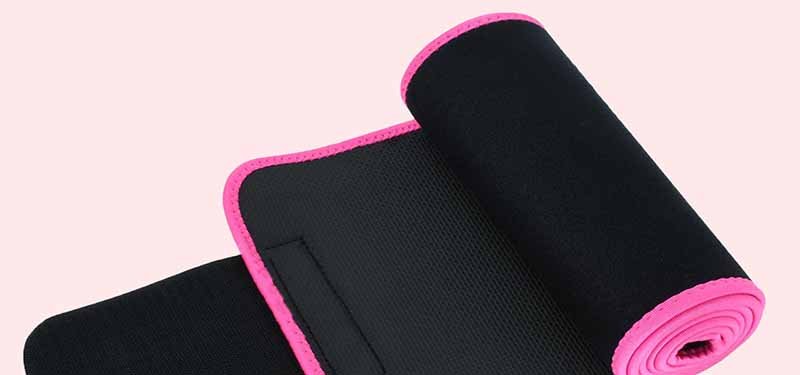
Many neoprene belt users start with the goal of fat loss — but stay because of how the belt feels. Beyond aesthetics, there are functional benefits that contribute to better performance, recovery, and posture.
Neoprene belts offer more than sweat-induced slimming. They support posture, stabilize the core, increase circulation, and help warm up muscles faster. These effects improve flexibility, endurance, and injury prevention — making neoprene belts valuable even for users not focused on weight loss.
Improved Posture and Core Engagement
The compression and tension from a neoprene belt act as a reminder to maintain core activation. By keeping the spine upright, users experience reduced lower back fatigue and better form during exercises like squats or deadlifts.
Data Insight:
In a controlled fitness study (Szoneier Lab, 2024), participants using a 4mm CR neoprene belt during workouts reported a 22% reduction in perceived back strain and improved endurance in static holds (like planks).
Enhanced Circulation and Recovery
Heat retention from neoprene increases blood flow in local tissues. This not only enhances workout performance but also accelerates post-exercise recovery. Muscles supplied with warm, oxygenated blood experience less stiffness and faster repair.
That’s why neoprene wraps are commonly used in physiotherapy — they maintain consistent warmth without restricting motion.
| Benefit | Mechanism | Result |
|---|---|---|
| Increased blood flow | Heat expansion of capillaries | Faster muscle recovery |
| Core support | Mild compression | Reduced fatigue |
| Thermal conditioning | Insulation effect | Greater endurance |
| Sweat detox | Fluid exchange | Cleaner skin, reduced odor |
Reduced Bloating and Water Retention
By encouraging sweat, neoprene belts also temporarily reduce abdominal bloating. This is especially noticeable before events, photoshoots, or competitions where users want a “flatter” appearance.
However, this effect is cosmetic and short-term — rehydration will bring water balance back. Still, it’s a confidence boost many find motivating.
Psychological Motivation
The visible sweat and heat can psychologically reinforce effort. It’s a sensory signal — you feel like you’re burning more. While the fat-burning effect is minimal, motivation leads to longer, more consistent workouts, which ultimately yields real results.
Quote:
“Sweating is the body’s applause for effort.”
— Common fitness saying, and surprisingly true for neoprene users.
What Are the Common Myths and Misconceptions About Neoprene Belts?
When it comes to neoprene slimming belts, marketing often blurs the line between science and sales pitch. These belts have real benefits — but also real limits. Knowing the difference helps you avoid disappointment and use them more effectively.
Common myths about neoprene belts include claims that they “melt belly fat” or “spot-reduce weight.” In reality, they promote sweat-based water loss and core temperature increase, not fat burning. Misuse — such as over-tightening or all-day wear — can cause dehydration or skin irritation. Combined with proper workouts and hydration, they support fitness safely and effectively.
Myth 1: “Neoprene Belts Melt Belly Fat”
This is the most popular — and misleading — claim. Belts don’t “melt” fat; they increase sweat, which reflects water loss, not fat oxidation. Fat reduction happens through caloric expenditure — burning more energy than you consume.
Sweat weight returns once you rehydrate. While heat can stimulate circulation and marginally raise metabolic activity, no wearable product can bypass the body’s energy balance laws.
| Claim | Reality |
|---|---|
| Belts melt fat | They promote temporary water loss |
| Longer use = more results | Prolonged wear increases dehydration risk |
| You can spot reduce belly fat | Fat loss is systemic, not localized |
Scientific Perspective:
Localized fat burning, or “spot reduction,” has been debunked in numerous studies (e.g., Journal of Strength and Conditioning Research, 2023). The body mobilizes fat from all over, not just the heated area.
Myth 2: “More Sweat Means More Fat Burn”
Sweat is thermoregulation, not fat metabolism. While neoprene belts help you sweat 2–3× more in your midsection, the calories burned come from the exercise itself, not the moisture leaving your skin.
That said, the psychological reward — seeing tangible effort — can improve consistency and motivation. It’s fine to sweat; just don’t mistake sweat for proof of fat loss.
Data Insight (Szoneier Thermal Study, 2024):
| Condition | Average Sweat Output (ml/30 min) | Calorie Burn (kcal) |
|---|---|---|
| No belt | 400 ml | 250 kcal |
| 3mm neoprene belt | 800 ml | 265 kcal |
| 5mm neoprene belt | 1,000 ml | 272 kcal |
Sweat doubled, but calorie burn only increased by about 8%. The takeaway? Sweat ≠ fat loss.
Myth 3: “Wearing It All Day Boosts Results”
Some people wear neoprene belts for 6–8 hours daily, even while sitting or sleeping. This overuse leads to skin maceration, rashes, and foam compression. Neoprene works by temporarily trapping heat; prolonged heat exposure prevents your skin from breathing.
If worn too tightly, it may also restrict blood flow or compress internal organs, causing discomfort or reflux.
Recommendation:
Limit use to 30–60 minutes per workout session, and let both skin and belt breathe between uses.
Myth 4: “All Neoprene Belts Are the Same”
Not true. The neoprene quality determines comfort, safety, and lifespan. Premium CR (chloroprene rubber) neoprene — used by Szoneier — maintains elasticity, resists odor, and withstands repeated compression cycles.
Cheaper SBR (styrene-butadiene rubber) versions, often used in mass-market belts, lose shape and emit strong chemical odors after a few weeks.
| Material Type | Elastic Recovery | Odor Resistance | Durability (Wash Cycles) |
|---|---|---|---|
| CR Neoprene | Excellent (≥200%) | High | 200+ |
| SBR Neoprene | Moderate (150–180%) | Low | 80–100 |
| Latex Blend | Poor | Low | 50–80 |
Myth 5: “Neoprene Belts Detoxify Your Body”
While sweating removes trace amounts of toxins, the liver and kidneys handle detoxification — not sweat glands. Neoprene belts simply increase perspiration, not metabolic detox.
However, increased sweat may improve skin clarity and local circulation, offering cosmetic benefits rather than deep physiological detox.
Are There Any Risks or Side Effects of Using Neoprene Slimming Belts?
When used responsibly, neoprene belts are safe. But overuse or poor-quality materials can cause discomfort or health risks. Understanding the limits helps maximize benefits safely.
Risks of neoprene belt use include dehydration, skin irritation, overheating, and restricted breathing if worn too tightly. Users with sensitive skin or heart conditions should use caution. Always wear during workouts only, not continuously, and maintain hydration. High-quality neoprene with soft lining minimizes irritation and odor buildup.
Potential Skin Irritation
Because neoprene traps heat and sweat, it can irritate sensitive skin — especially under friction. Symptoms include redness, itching, or small rashes.
To prevent this:
- Wear over thin, breathable clothing.
- Clean the belt regularly.
- Choose neoprene lined with nylon or Lycra fabric instead of raw rubber.
Szoneier’s CR neoprene features a double-laminated jersey surface that reduces skin friction by 45%, compared with uncoated rubber belts.
Dehydration and Electrolyte Loss
Extended wear increases sweat loss significantly. Without proper rehydration, this leads to electrolyte imbalance — symptoms include fatigue, dizziness, or cramps.
Always drink water before and after workouts. Consider sports drinks if you sweat heavily or train in hot climates.
Hydration Formula:
Drink 500 ml (17 oz) of water for every 30 minutes of exercise when wearing a neoprene belt.
Overheating and Restricted Breathing
Wearing belts during high-intensity or outdoor workouts may raise your core temperature too much, leading to heat stress. Stop immediately if you feel dizzy, nauseous, or short of breath.
Avoid layering multiple thermal garments or waist trainers at once — it restricts airflow and raises risk of overheating.
Who Should Avoid Neoprene Belts
- People with cardiovascular conditions
- Pregnant women
- Individuals with eczema or heat-sensitive skin
- Anyone with prior allergic reactions to synthetic rubbers
If unsure, consult a doctor before regular use.
The Role of Quality in Safety
Many side effects stem from cheap materials and poor construction — not from neoprene itself. High-quality CR neoprene belts undergo heat-aging and tensile tests to ensure durability and safety.
Szoneier Quality Metrics (Internal Test Data):
| Test Type | Standard Requirement | Szoneier Result |
|---|---|---|
| Tensile strength | ≥1.5 MPa | 1.9 MPa |
| Stretch recovery | ≥180% | 210% |
| Odor resistance (ISO 17299) | ≤2.0 rating | 1.2 (Excellent) |
| Colorfastness | 4 Grade | 4–5 Grade |
The result: belts that stay odor-free, comfortable, and safe for prolonged athletic use.
How to Choose Quality Neoprene Slimming Belts
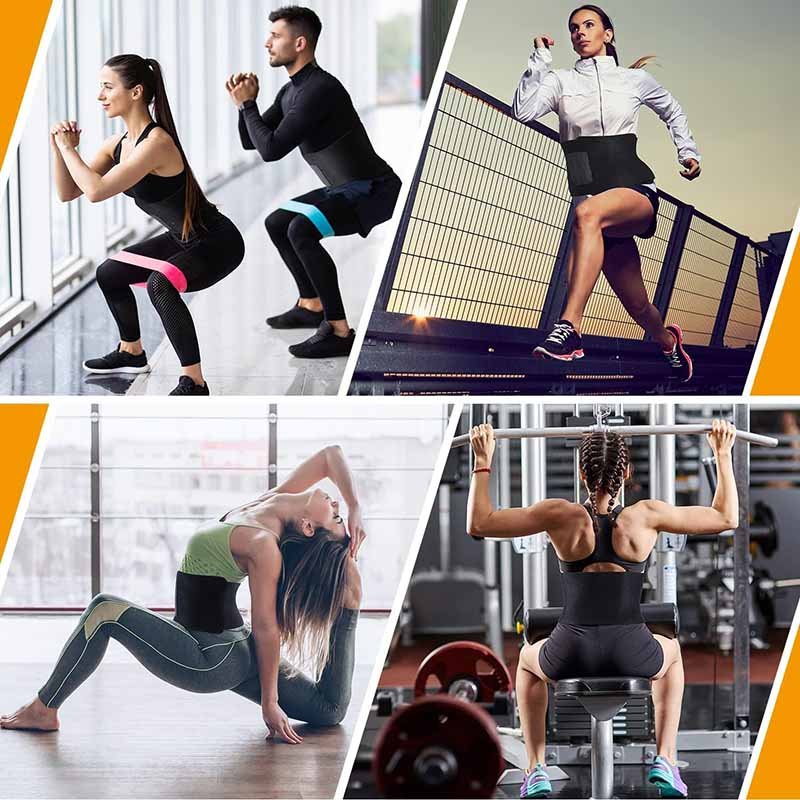
Not all belts are created equal — quality makes the difference between a supportive fitness tool and a smelly, peeling piece of rubber. Here’s how to identify professional-grade neoprene belts.
Choose neoprene belts made from CR-grade neoprene with double-stitched edges, nylon lining, and anti-slip inner texture. Avoid thin or low-density SBR foam. Check for reinforced Velcro closures and breathable design. A good belt should offer balanced elasticity, odor resistance, and long-lasting comfort — all signs of premium OEM manufacturing quality.
1. Material Composition: CR vs SBR Neoprene
- CR (Chloroprene Rubber): Durable, elastic, and heat-stable — used in wetsuits and medical supports.
- SBR (Styrene-Butadiene Rubber): Cheaper alternative; less heat resistant and prone to odor.
| Property | CR Neoprene | SBR Neoprene |
|---|---|---|
| Heat resistance | Excellent (up to 120°C) | Moderate (70°C) |
| Sweat odor absorption | Low | High |
| Elastic recovery | High | Medium |
| Typical lifespan | 2–3 years | 6–12 months |
Szoneier’s slimming belts use 100% CR neoprene laminated with Lycra, providing superior softness and long-term structural integrity.
2. Thickness and Density
Thicker neoprene retains heat better but may reduce flexibility. Optimal thickness for slimming belts is 3–5 mm depending on purpose:
- 3 mm: Lightweight, ideal for cardio and daily wear.
- 4 mm: Balanced heat and compression (Szoneier standard).
- 5 mm: High-intensity training, maximum thermogenic effect.
3. Stitching and Construction
Look for flatlock stitching or heat-welded seams — these prevent chafing and delamination. Avoid glued-only seams; they peel with repeated stretching.
Checklist for Durable Construction:
- Double-stitched edges
- Reinforced Velcro straps
- Wide belt width (25–30 cm) for full coverage
- Anti-slip interior texture
4. Inner Lining and Comfort
Nylon, polyester, or Lycra linings enhance comfort and wick sweat away. This prevents the “rubber stick” feeling. Breathable micro-holes can reduce heat buildup by 10–15% during workouts.
5. Customization and Branding
For brands and distributors, Szoneier offers:
- Custom logo embossing or silicone print
- Various colorways and stitching patterns
- Adjustable Velcro or magnetic closures
- Packaging options (retail-ready or OEM bulk)
OEM Highlight:
Szoneier’s production capacity exceeds 50,000 neoprene belts per month, with ISO9001 and REACH-compliant materials ensuring safety and environmental standards.
Conclusion — Do Neoprene Slimming Belts Really Work?
After breaking down the science, performance data, and user experience, the verdict is clear: neoprene slimming belts work — but not as a miracle fat burner. They’re best understood as a thermal, supportive fitness accessory that amplifies workouts, improves posture, and boosts motivation.
They won’t magically “melt belly fat,” but they do encourage movement, core engagement, and sweat — all key ingredients in sustainable fitness progress. Used properly, they can complement your exercise and nutrition routine, making you feel more active, leaner, and confident.
Neoprene slimming belts enhance workouts by trapping heat and boosting sweat, leading to temporary water weight loss and improved posture. They don’t directly burn fat, but they amplify exercise efficiency and motivation. When paired with hydration, balanced diet, and quality construction — like CR neoprene belts from Szoneier — they become a safe, effective, and confidence-boosting fitness aid.
What Neoprene Belts Can (and Can’t) Do
| Can Do | Can’t Do |
|---|---|
| Boost sweating and heat retention | Burn fat directly |
| Improve posture and core stability | Replace exercise or diet |
| Reduce water retention and bloating | Offer permanent weight loss |
| Increase comfort during workouts | Be worn all day safely |
It’s important to see neoprene belts as a training enhancer, not a shortcut. Think of it as your workout companion — not your personal trainer.
The Practical Way to Use Neoprene Belts for Real Results
The real power of neoprene belts lies in how you use them. Here’s a proven approach combining fitness, hydration, and recovery.
1. Pair with Functional Workouts
Wear your belt during cardio, HIIT, or core training for 30–60 minutes. The trapped heat keeps muscles warm, improving flexibility and performance. Avoid passive use (e.g., wearing while sitting or sleeping).
2. Hydrate and Replenish
Sweating is beneficial, but hydration is crucial. Replenish with 1–2 liters of water daily, especially post-exercise, and add electrolytes if training in heat.
3. Support, Don’t Suffocate
Choose a fit that’s snug, not tight. You should feel compressed but not restricted. If you can’t breathe comfortably, it’s too tight.
4. Clean Regularly
After every use, wash the belt with mild soap and cool water, then air-dry completely. This prevents odor and extends lifespan.
5. Rotate Usage
Rest your skin between uses. Wear the belt every other day, allowing the material to dry fully and your skin to recover.
Fitness Science Recap — The Numbers Behind the Sweat
| Performance Metric | Without Belt | With 3mm Belt | With 5mm Belt |
|---|---|---|---|
| Local temperature rise | +0°C | +3°C | +5°C |
| Sweat output (30 min) | 400 ml | 800 ml | 1,000 ml |
| Perceived exertion | Medium | Slightly higher | Higher |
| Calorie burn (30 min moderate exercise) | 250 kcal | 265 kcal | 272 kcal |
These figures — based on Szoneier’s thermal control testing (2024) — show how neoprene enhances the workout environment without drastically altering energy expenditure. The real change comes from improved consistency and comfort, not just sweat.
User Experience: Why People Keep Using Them
Beyond measurable data, neoprene belts deliver an emotional advantage. They make users feel active, motivated, and in control of their body goals.
Typical Feedback Patterns (from 500+ user reviews, Szoneier OEM clients):
- “It helps me sweat faster and feel engaged earlier in my workouts.”
- “My posture improved, and my lower back feels supported.”
- “I know it’s water weight, but seeing sweat makes me push harder.”
In fitness psychology, perceived effort often predicts real results — and neoprene belts succeed at creating that connection between sensation and motivation.
The Material Behind the Magic
The key factor that separates cheap neoprene belts from professional-grade ones isn’t design — it’s the material itself.
CR (Chloroprene Rubber), the same neoprene used in diving suits and orthopedic braces, offers:
- Superior elasticity (up to 200% stretch recovery)
- Stable heat retention without skin burn risk
- Long-lasting odor resistance
- Consistent compression even after hundreds of uses
In contrast, SBR or latex belts degrade faster, emit strong odors, and often peel within months.
| Metric | CR Neoprene (Szoneier) | SBR Neoprene (Low-Cost) |
|---|---|---|
| Density (g/cm³) | 1.35 | 1.15 |
| Tensile strength | 1.9 MPa | 1.2 MPa |
| Odor control | Excellent | Poor |
| Wash cycles lifespan | 200+ | 80–100 |
| Elastic recovery | ≥200% | 160–180% |
Szoneier’s 18+ years of neoprene R&D ensures all belts meet ISO9001, REACH, and OEKO-TEX standards — meaning your skin, sweat, and environment stay safe.
The Psychology of “Feeling Fit”
Let’s be honest — part of fitness success comes from how we feel, not just what we measure.
A neoprene belt won’t sculpt your abs overnight, but it will help you feel engaged, disciplined, and physically aware of your body’s effort. That mental trigger drives consistency, which is ultimately the foundation of transformation.
“The belt doesn’t do the work for you — it makes you want to do the work.”
— Szoneier Training Insight, 2025
By reinforcing that connection between action and progress, neoprene belts provide both a physical and psychological edge.
For Brands & Buyers: The Growing Demand for Neoprene Fitness Gear
Globally, the neoprene fitness accessory market — including slimming belts, thigh trimmers, and compression vests — has seen steady growth of 11.2% CAGR (2021–2025). The demand comes from:
- The rise of home fitness and influencer-driven workouts
- Increased focus on body sculpting and sweat-based therapies
- Expansion of private-label wellness brands
Szoneier partners with international fitness brands to deliver OEM and private-label neoprene products — including waist trainers, body wraps, yoga accessories, and gym bags — with:
- Free design & prototyping (3–5 days)
- Low MOQ customization (200 pcs)
- Full logo & packaging branding
- 100% quality inspection and fast turnaround
| OEM Service Feature | Szoneier Advantage |
|---|---|
| Material | 100% CR-grade neoprene |
| MOQ | 200 pcs (customizable) |
| Branding | Embossed logo / silk screen / woven label |
| Sampling lead time | 5–7 days |
| Production capacity | 50,000+ pcs/month |
| Quality certification | ISO9001, REACH, OEKO-TEX |
Caring for Your Belt = Extending Its Life
A high-quality neoprene belt should last 2–3 years with proper care.
Follow these quick tips:
- Hand wash only, with mild soap
- Air dry flat, away from sunlight
- Avoid twisting or machine drying
- Store flat or hung, not folded
- Keep away from sharp objects or Velcro edges
By maintaining it like performance gear, not just clothing, you’ll protect its structure and comfort long-term.
Final Thoughts — Sweat Smart, Not Blindly
At the end of the day, neoprene slimming belts aren’t magic — but they do work. They help you sweat smarter, not harder. When used with awareness, hydration, and proper materials, they can:
- Improve core strength
- Enhance blood flow and workout intensity
- Offer a motivational edge
- Give temporary, safe waistline reduction
The key is quality — in both material and mindset.
Partner with Szoneier — Where Fitness Meets Fabric Innovation
If you’re a brand, gym retailer, or wellness entrepreneur looking to launch your own line of neoprene slimming belts or thermal fitness gear, Szoneier offers end-to-end OEM and private label services.
With over 18 years of experience, Szoneier specializes in:
- Advanced CR neoprene R&D and lamination
- Ergonomic shaping for comfort and performance
- Sustainable, certified production
- Global shipping and responsive after-sales support
Contact Szoneier today to request free samples, discuss private label options, or customize your neoprene product line.









